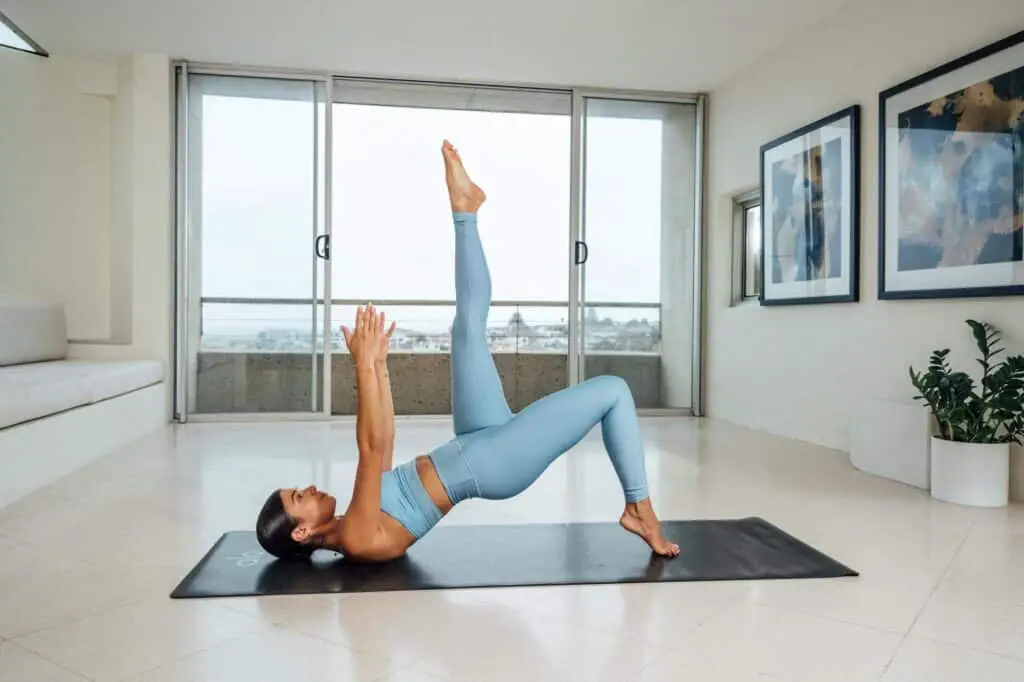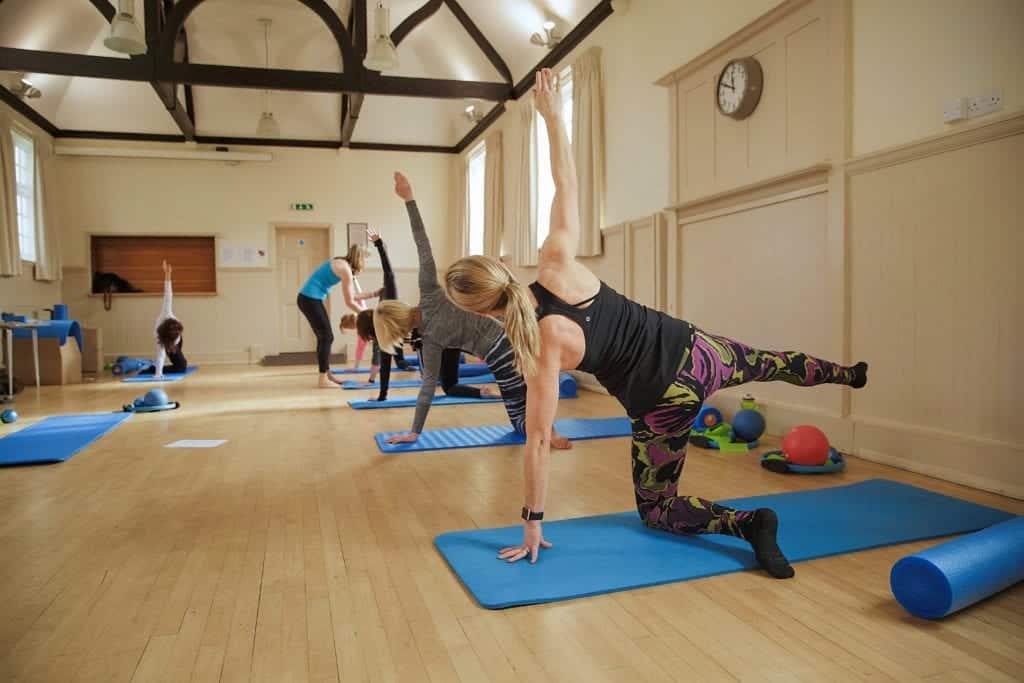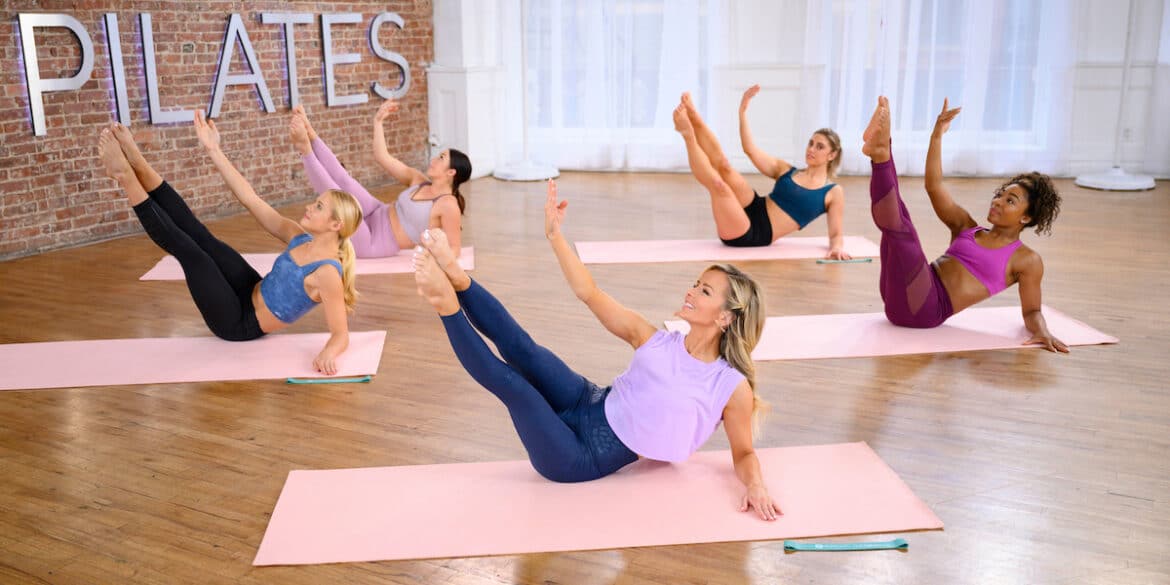Introduction
What To Wear To A Pilates Class: When it comes to preparing for a Pilates class, choosing the right attire is not just about looking stylish but also ensuring comfort, flexibility, and optimal performance during your workout session. Pilates, a mind-body exercise method that focuses on core strength, flexibility, and balance, demands clothing that allows you to move freely and comfortably while providing the support needed for various exercises. Whether you’re a seasoned Pilates enthusiast or a newcomer to this fitness regimen, understanding what to wear to a Pilates work class can greatly enhance your overall experience and effectiveness in achieving your fitness goals. In this guide, we will explore the key considerations and recommendations for selecting the perfect Pilates attire to make the most out of your workout sessions.
Pilates involves a series of controlled and precise movements that engage your muscles. Start by choosing comfortable clothing made from breathable materials, like moisture-wicking fabric. This will help keep you dry as you work up a sweat during your class. Opt for form-fitting tops or tank tops. These allow your instructor to better assess your form and alignment. Loose or baggy tops can make it difficult for your instructor to provide feedback and can get in the way during certain exercises.
For women, a supportive sports bra is essential to provide the necessary support during exercises and ensure comfort throughout the class. Choose high-rise leggings or shorts that offer a snug fit around the waist. High-rise options help keep your midsection covered during various movements, and they also prevent any discomfort caused by a low-rise waistband digging into your skin during exercises.

What clothes to wear for Pilates?
Many of our clients enjoy high-waisted bottoms for classes as they provide good coverage and comfort. Opt for leggings, capris, or shorts that are breathable, stretchy, and comfortable. Some clients do find that tight shorts ride up during certain moves, so keep this in mind when deciding what to wear to Pilates.
Supportive Sports Bras
For women, a supportive sports bra is essential. Pilates exercises often involve movements that require core engagement and upper body strength, making a well-fitting sports bra crucial for comfort and support. Ensure that your sports bra provides the right level of support for your body type and the intensity of your Pilates session.
Pilates-Specific Footwear
In Pilates, it’s common to perform exercises barefoot or in socks with grip. However, some practitioners prefer to wear Pilates-specific grip socks, which provide traction and prevent slipping during exercises on the mat or reformer. If you choose to wear socks, make sure they have rubberized grips on the sole for added safety.
Layering for Versatility
Layering your clothing can be advantageous, especially if you’re attending a Pilates class in a studio with varying temperatures. Start with a moisture-wicking base layer to keep sweat away from your body. Add a lightweight, breathable top layer that you can easily remove if you get too warm. Leggings or Pilates-specific shorts are ideal for the bottom layer, providing flexibility and comfort.
Avoid Loose or Baggy Clothes
Avoid wearing loose or baggy clothing during Pilates sessions. Loose clothing can get in the way, make it challenging for your instructor to assess your form, and potentially lead to accidents or injuries. Stick to fitted clothing that allows your instructor to see your body alignment and provide guidance when needed.
Should I wear shorts or leggings to Pilates?
“It’s all about feeling comfortable.” While her personal go-to is Lululemon’s Align leggings for their high-waist, soft fabric, and stretchy fit, Tory Burch Sport’s legging is just as supportive, specifically for medium-to-high impact workouts. Not into a pant legging? Short styles are excellent for pilates, too.
Leggings for Pilates
Coverage and Support
Leggings, typically made of stretchy, moisture-wicking materials like spandex or nylon, offer excellent coverage and support. They hug your legs snugly, providing compression and stability to your muscles during various Pilates movements. This added support can help you maintain proper alignment and form.
Temperature Regulation
Leggings are versatile and can be worn comfortably in various temperature settings. They provide warmth during cooler weather and effectively wick away moisture to keep you cool and dry when it’s warm. If you’re attending a Pilates class with varying room temperatures, leggings are a reliable choice.
Modesty and Confidence
Some people prefer leggings for the added modesty they offer. Whether you’re self-conscious about your legs or simply prefer more coverage, leggings can provide a sense of confidence and comfort during your Pilates workout.
Versatility
Leggings are versatile workout wear that can seamlessly transition from your Pilates class to other activities or errands. They come in various lengths, including full-length, 7/8, and cropped options, allowing you to choose the style that suits your personal preference.
Should you wear leggings to Pilates?
Pilates requires form-fitting, breathable clothing. The ideal outfit is a tank top and leggings, but you can also wear shorts to class. To avoid injuries, don’t wear clothes with tassels or drawstrings–they can get caught in the Pilates equipment!
Support and Compression
Leggings are typically made from stretchy, moisture-wicking materials like spandex or nylon. This composition provides the perfect blend of support and compression, which is crucial for Pilates. During Pilates exercises, especially those that engage the core and lower body, leggings help stabilize your muscles and provide the necessary support. The compression factor aids in maintaining proper alignment and form, ensuring you get the most out of your Pilates workout.
Full Leg Coverage
One of the key benefits of wearing leggings to Pilates is the full leg coverage they offer. Unlike shorts or looser-fitting workout pants, leggings extend from your waist down to your ankles. This coverage not only keeps your legs warm and protected but also prevents skin-to-skin contact, reducing friction and chafing during exercises that involve leg movements.
Temperature Regulation
Leggings are versatile and can adapt to varying room temperatures or weather conditions. They provide warmth during cooler Pilates classes and effectively wick away moisture to keep you cool and dry when you work up a sweat. This versatility makes leggings a suitable choice for year-round Pilates practice.
Modesty and Confidence
Many people appreciate the modesty that leggings offer. Whether you’re self-conscious about your legs or simply prefer more coverage, leggings provide a sense of confidence and comfort during your Pilates workout. You can focus on your movements without worrying about feeling exposed or uncomfortable.
Do you wear shoes in Pilates class?
Skip shoes: Pilates is typically done barefoot, so you will take your shoes off at the beginning of the session. If you want to wear socks you can, but opt for socks with a grip bottom so you don’t slip. Avoid baggy clothes: Choose workout clothing that’s stretchy but not baggy.
Barefoot Pilates
Enhanced Sensory Connection: Pilates emphasizes mind-body connection and body awareness. Going barefoot allows you to feel the ground and make a stronger connection with your feet, improving balance and proprioception.
Better Foot Control: Pilates exercises often involve intricate footwork, such as pointing and flexing your feet, articulating through the toes, and rolling through the feet. Going barefoot allows for greater control and precision in these movements.
Grip and Stability: The natural traction of your bare feet can provide grip and stability when performing exercises on the mat or Pilates equipment, such as the reformer. This can help prevent slipping and enhance your overall Pilates experience.
Foot and Ankle Strength: Exercising barefoot can help strengthen the intrinsic muscles of the feet and ankles, improving overall foot stability and reducing the risk of injury.
Wearing Shoes in Pilates
Health Considerations: If you have foot conditions, such as plantar fasciitis, or if you require arch support due to flat feet, wearing supportive shoes might be necessary for pain management and comfort during Pilates.
Hygiene and Safety: Some individuals may prefer wearing shoes in a communal studio environment for hygiene reasons. Additionally, if you’re attending a class that involves cardiovascular or dynamic exercises in addition to Pilates, like Pilates Fusion or Piloxing, shoes can provide better support and shock absorption.
Can you do Pilates without a bra?
Most women will want a bra designed for sports or for yoga. Pilates is not a high-impact sport, but a sports bra ensures that discomfort is not experienced during rapid shifts of position. A low-impact sports bra will definitely suffice. A specific yoga bra can also work.
Comfort is Key
The most important factor when deciding whether to wear a bra during Pilates is your personal comfort. Many women find bras uncomfortable and restrictive, especially during exercise. If you feel more comfortable and at ease without a bra, it is entirely acceptable to practice Pilates without one.
Impact on Movement
Pilates involves a wide range of movements that engage the core, spine, and upper body. For some women, the presence of a bra with underwires or excessive padding can restrict movement or cause discomfort during exercises that require twisting, bending, or stretching. In such cases, opting for a sports bra or going braless might be more suitable to allow for unrestricted movement.
The Right Support
If you do decide to wear a bra during Pilates, it’s essential to choose the right type of bra. A sports bra or a bralette designed for low-impact activities is a good choice. These bras provide adequate support without unnecessary padding or underwire that can interfere with your movements. Look for a bra that allows you to move comfortably and doesn’t dig into your skin.
Body Confidence
Body confidence plays a significant role in your Pilates experience. If wearing a bra makes you feel more confident and secure, then it’s a valid choice. Conversely, if you’re comfortable without one and it boosts your self-assurance, that’s perfectly acceptable as well. Pilates is about connecting with your body, and feeling comfortable and confident is vital for a successful practice.
Can I wear loose clothes to Pilates?
You will be moving your arms and legs through a greater range of movement than usual and so your clothes need to be loose enough or stretchy enough to allow for that increased range. Loose or tight? Without a doubt, loose fitting clothing will allow you to move well.
Advantages of Wearing Loose Clothes to Pilates
Comfort and Breathability: Loose-fitting clothing can provide a greater sense of comfort and breathability, allowing air to circulate freely around your body. This can be especially beneficial in hot and humid environments or during vigorous Pilates sessions when you may sweat more.
Freedom of Movement: Loose clothes can offer enhanced freedom of movement, which is essential in Pilates. You can move your limbs more freely without feeling constrained, which may be particularly advantageous during exercises that involve stretching or reaching.
Body Acceptance: Loose attire can offer a sense of body acceptance and comfort for those who may feel self-conscious in form-fitting workout clothes. It allows you to focus on the movements and the benefits of Pilates without worrying about body image.
Disadvantages of Wearing Loose Clothes to Pilates
Limited Visibility: Loose-fitting clothing may obstruct your instructor’s ability to assess your form and alignment accurately. In Pilates, proper form is crucial to maximize the effectiveness of exercises and prevent injuries. Baggy clothes can make it challenging for your instructor to provide guidance.
Safety Concerns: Loose clothes can pose safety risks in certain situations. For instance, during exercises that involve moving on equipment like the Pilates reformer or Cadillac, baggy pants or shirts could get caught or tangled, leading to accidents or discomfort.
Difficulty in Core Engagement Observation: Loose attire may make it harder for you to observe your own core engagement and alignment, as it can obscure your view of your body. Proper core engagement is a fundamental aspect of Pilates, and being able to see and feel the engagement is essential for a successful practice.
Do you need a sports bra for Pilates?
For Yoga and Pilates you need sports bras which offer medium to low impact support to give you ultimate freedom of movement.
The Role of Support
Pilates is a low-impact exercise that focuses on core strength, flexibility, and body awareness. While it doesn’t involve the high-impact movements of activities like running or jumping, it does engage the core and upper body muscles. The level of support you need during Pilates largely depends on your breast size and personal preference.
Consider Your Comfort
The primary reason for wearing a sports bra during Pilates is to ensure your comfort. If you feel more comfortable and supported with a sports bra, then it’s a wise choice. Many women prefer the additional support provided by a sports bra, especially during exercises that involve twisting, bending, or stretching.
Size Matters
Women with larger breasts often find that a sports bra is essential for a comfortable and effective Pilates session. The support offered by a sports bra can help minimize breast movement and reduce any potential discomfort or pain associated with unsupported breasts during exercise.
Mind-Body Connection
Pilates places a strong emphasis on the mind-body connection and body awareness. For some women, the presence of a sports bra can provide a sense of security and confidence, allowing them to fully focus on their movements without distractions or self-consciousness.
Choice of Bra
If you decide to wear a sports bra during Pilates, it’s essential to choose one that’s appropriate for low-impact activities. Look for sports bras that offer light to medium support rather than those designed for high-impact workouts. A sports bra designed for low-impact activities will provide the necessary support without unnecessary compression.
Can I wear t-shirt for Pilates?
Tops. New to pilates a T shirt is fine, with a sweat shirt over it until you have warmed up. Make sure the T shirt is not too baggy, the teacher needs to see your bodies alignment, it doesn’t need to be skin tight. I would advise wearing a round neck T shirt rather than a low cut one.
Comfort and Range of Motion
The primary consideration when wearing a t-shirt for Pilates is your comfort and range of motion. Pilates involves a wide range of movements, including stretching, twisting, bending, and reaching. Your t-shirt should allow for unrestricted movement of your arms, shoulders, and torso.
If your t-shirt restricts your movement or feels uncomfortable during specific exercises, it may affect your overall Pilates experience. In such cases, you might consider opting for a more suitable top, such as a tank top or a moisture-wicking sports shirt.
Avoiding Distractions
Pilates emphasizes the mind-body connection and body awareness. While comfort is essential, your clothing should not become a distraction during your practice. If you find yourself constantly adjusting your t-shirt or feeling self-conscious about how it fits, it might be worth exploring different attire options that allow you to fully focus on your movements and the mind-body connection.
Temperature and Studio Environment
Consider the temperature of the Pilates studio or the environment in which you’ll be practicing. If the studio tends to be on the cooler side, a t-shirt may be suitable, especially if you can layer it with a lightweight jacket or long-sleeved shirt for warmth during the warm-up and cool-down phases.
Personal Preference
Ultimately, whether or not you wear a t-shirt for Pilates is a matter of personal preference. Some individuals feel comfortable and confident in a t-shirt and find it suitable for their practice. Others may prefer different tops, such as tank tops, sports shirts, or fitted workout tops, to optimize their Pilates experience.

Conclusion
Choosing the right attire for a Pilates class is about finding the perfect balance between comfort, functionality, and style. Pilates is a discipline that requires precision and control in every movement, making your choice of clothing a crucial factor in your overall experience. From form-fitting tops and high-rise leggings to no-slip socks and supportive sports bras, each element of your outfit plays a role in helping you achieve your fitness goals while feeling confident and comfortable.
Remember, the right attire allows you to move freely, maintain proper form, and enhance your connection with your body during Pilates exercises. So, as you prepare for your next Pilates class session, keep these guidelines in mind to ensure that your clothing supports your fitness journey and enables you to fully engage in this transformative practice. With the right attire, you’ll be well on your way to mastering Pilates and reaping its numerous physical and mental benefits.
Opt for moisture-wicking and breathable fabrics like nylon, spandex, or a blend of these materials. These fabrics help keep you dry and comfortable by wicking away sweat during your workout. If you’re unsure about the temperature of the studio, consider wearing layers that you can easily remove. A lightweight, breathable long-sleeved shirt or a zip-up jacket can be a handy addition for colder studios or outdoor Pilates sessions.

